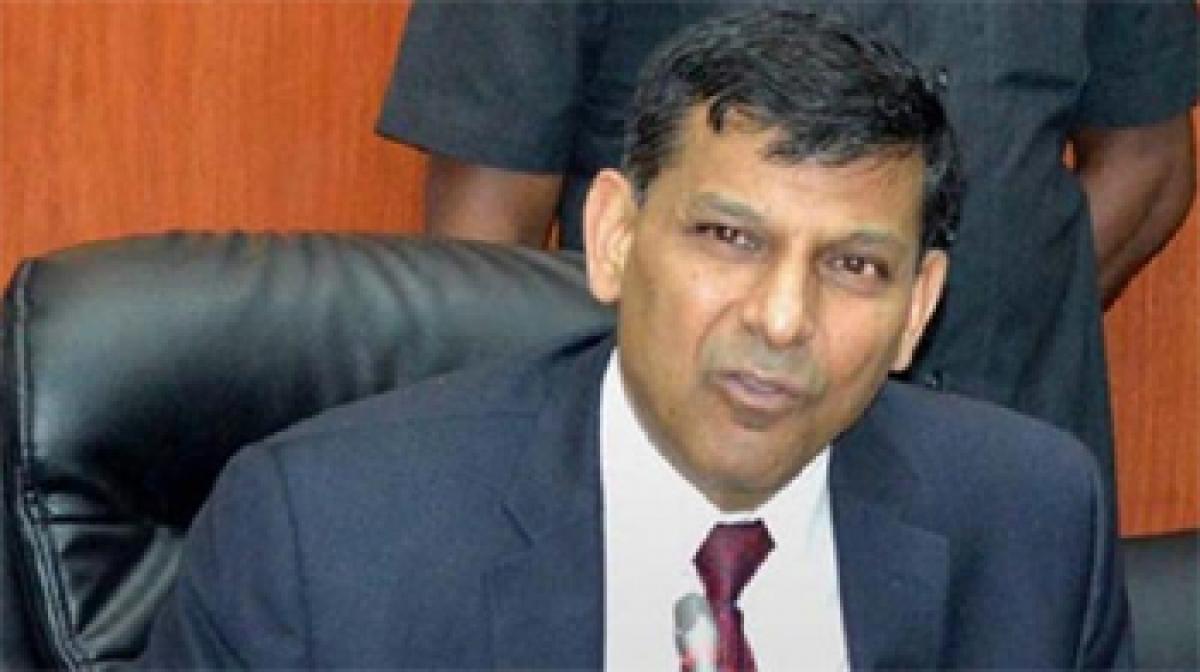Live
- Red Cross blood centre inaugurated
- Fee Reimbursement Dues: TG private colleges to shut down from today
- HYDRA razes illegal structures in Ameenpur
- Famed Vemulawada shrine to get Rs 76 cr fund push for makeover
- Over 77L digital life certs generated by pensioners
- Setback for RGV as HC refuses to quash case against him
- PM Modi interacts with Joe Biden in Rio de Janeiro
- India rated as fastest growing G20 economy
- Maha campaign ends, polls tomorrow
- Assailants of Cong leader held after encounter; 2 hurt
Just In

The Reserve Bank of India will continue to use currency intervention to reduce volatility in the country\'s exchange rates, the bank\'s governor, Raghuram Rajan, said on Monday.
The Reserve Bank of India will continue to use currency intervention to reduce volatility in the country's exchange rates, the bank's governor, Raghuram Rajan, said on Monday.
"There is a school of thought that says: Let the exchange rate move wherever it will," said Rajan, at the Inaugural Kotak Family Distinguished Lecture held at Columbia Law School in New York.
"That's something we could do," Rajan said. "But in emerging markets, with institutions not as strong as industrialized countries, you find there are collateral effects of both the capital moving in and going out."
India will intervene in the currency market when there's a sustainable risk in global markets and the country sees a flood of capital coming in, he said.
"We really don't want the currency to move only as result of capital flows," Rajan said. "We would like it to be more focussed on the underlying fundamentals of trade and services."
India's foreign exchange reserves INFXR=ECI swelled to a record high of $360 billion for the week ended April 1, largely on account of the central bank's dollar purchases to rein in the rupee's strength as foreign funds poured into Indian financial markets.
Rajan confirmed that India's reserve build-up was a result of the central bank's intervention.
"So we let the exchange rate move, we never stand in the way, but we pick up some as flows come in," he added.
India's central bank governor said he was closely watching inflation developments as well as monsoon rain forecasts in terms of impact on monetary policy.
"As evidence of inflation and monsoon build one way or the other, this will give us more information about the direction of monetary policy," Rajan said.
"We're still in an accommodative mode. Precisely when and by how much we will raise interest rates, we will have to see."
Earlier this month the Reserve Bank of India cut its key lending rate by 25 basis points to 6.5 per cent. India's monsoon in the past two years has been poor, resulting in some drought, but the La Nina weather phenomenon this year is expected to produce a better monsoon.
A third consecutive drought would have meant a spike in food prices, plunge in purchasing power of the rural economy, and slower economic recovery overall.

© 2024 Hyderabad Media House Limited/The Hans India. All rights reserved. Powered by hocalwire.com







